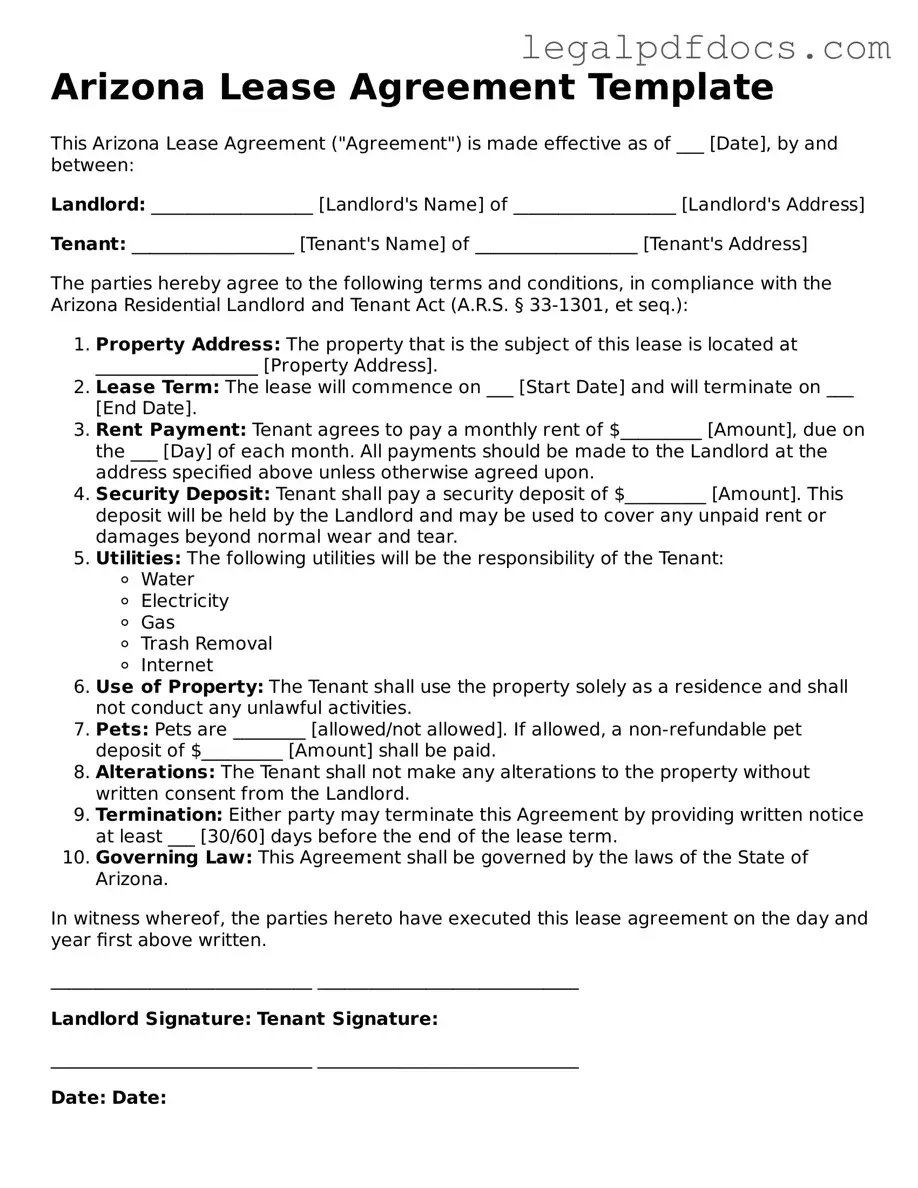Official Lease Agreement Form for Arizona
The Arizona Lease Agreement form is a legal document that outlines the terms and conditions between a landlord and tenant for renting residential or commercial property in Arizona. This agreement ensures both parties understand their rights and responsibilities, providing a clear framework for the rental relationship. To get started, fill out the form by clicking the button below.
Open Lease Agreement Editor Here
